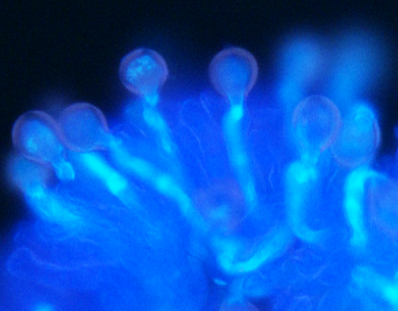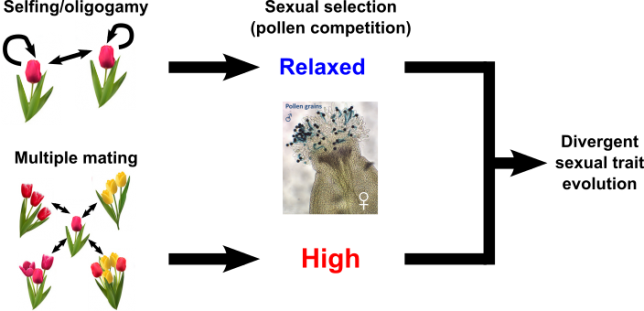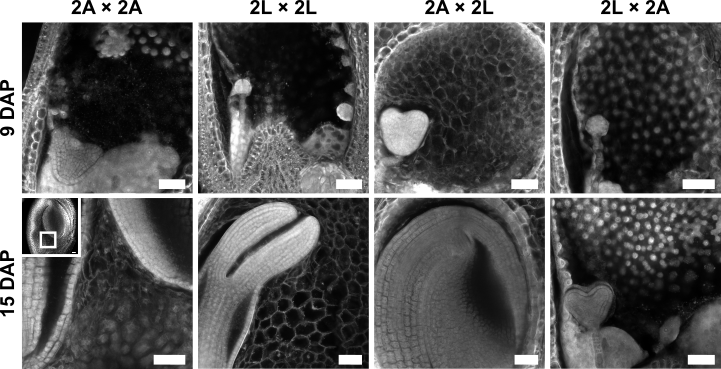How do sexes interact and evolve in plants? This question is on our mind from dawn to dusk and beyond, and forces us to think in an integrative way, from gametophytic molecular interactions to macroevolutionary processes….
 Sexual selection in plants
Sexual selection in plants
Is there more than meets the eye? From a human viewpoint, sexual selection in plants is certainly not as obvious as it is in animals (and birds especially). Nevertheless, males do compete with each other for mating, and females choose their mating partners in plants. What are the mechanisms at work, and what are the consequences on the evolution of sexual traits in plants? These are the questions guiding us. We follow an integrative approach, linking evolutionary processes with developmental mechanisms. Our methods range from microscopy, transcriptomics, to population genomics.


The diversity of reproductive strategies in plants allow us to dissect specific components of sexual selection: for example, transition from multiple mating (outcrossing) to selfing (mating with oneself) is frequent in plants, and is likely to reduce the intensity of sexual selection. Also, while most plant species are hermaphrodites, some evolved physically separated sexes, allowing us to monitor independently sex-specific selective interests and their consequence on the evolution of related sexual traits.
In parallel, whole genome duplication, an event leading to the copy of an entire genome, is ubiquitous in plants. It may either reduce the efficacy of sexual selection and “slow down” the evolution of sexual traits, or to the contrary, may provide a wider substrate for sexual selection to act.
In a word, we aim at understanding how sexual selection, reproductive strategies and polyploidy interact to drive the evolution of sexual traits in plants.
Main collaborators: Marek Slovak and Roswitha Schmickl (Charles University, Czech Republic), Amandine Cornille (CNRS, France), Stuart Campbell (The University of Sheffield, UK).
 Sexual selection and plant speciation
Sexual selection and plant speciation

Defects in Arabidopsis hybrid seeds (adapted from Lafon-Placette et al., 2017)
We are also investigating how sexual selection can lead to the emergence of new species, by building reproductive isolation between genetic lineages or between lineages of different ploidies.
At microevolutionary scales, if sexual selection drives plant reproduction evolution, one can expect that divergent sexual selection will lead to divergent evolution of sexual traits. If populations diverged enough in reproductive traits, this can lead to the incapacity to interbreed, i.e this can establish hybridization barriers and ultimately, speciation. Alternatively, processes related to sexual selection, such as pollen-pollen competition, may act as a direct barrier establishing reproductive isolation.
At macroevolutionary scales, sexual selection may accelerate the rate at which plant species emerge.
Main collaborators: Roswitha Schmickl and Filip Kolář (Charles University, Czech Republic), Antonin Machac (Center for Theoretical Studies, Charles University & Czech Academy of Sciences, Czech Republic), Tanja Slotte (Stockholm University, Sweden), Johanna Leppälä (Umeå University, Sweden).
